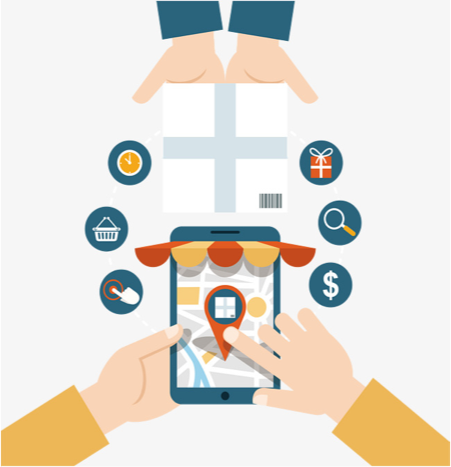With 2018’s holiday shopping season well in our rear-view mirror, it’s a good time to analyze how it all played out. I’m sure many businesses are already starting to construct holiday marketing plans; it’s never too early. So let’s take a look at the key takeaways and what we can learn from last year’s stats.
Experts were right on the money when they predicted that the 2018 holiday shopping season would be a big one. In fact, it even exceeded many forecasts, marking the highest growth rates for both brick-and-mortar and ecommerce since 2011.
At the start of the season, Adobe estimated that ecommerce spending would increase 14.8% to $124 billion, but final numbers showed that it actually rose 16.5% to $126 billion. And indications of the strong showing were seen early. According to research by Salesforce, 50% of holiday shopping was completed by Monday, December 3. Shoppers were well-prepared and ready to spend. The frenzy continued through the remaining weeks as well, with 74% even browsing from their mobile phones on Christmas Day.
Much of these gains can be attributed to the fact that the number of sales via mobile increased by 56% from the previous year, accounting for 40% of all online sales. Mobile commerce actually passed desktop for the first time ever. Consumers are becoming more and more comfortable with using their smartphones and tablets to make purchases. Andrew Lipsman, principal analyst at eMarketer, chalks this up to “an overall improvement in retail apps, a more seamless mobile checkout process, and growing demand for click-and-collect transactions.” Significant increases in digital wallets, like Apple Pay and PayPal, also helped to make checkout easier and faster.
Still, omnichannel seems to be the best way to go. Retailers used a variety of means to get that sale. Deals were offered both in-store and online, and messaging was clear: if you can’t get your item in our store, go to our app and we will get it to you quickly!
Consumers were even more responsive to using the increasingly popular BOPIS service – buy online, pick up in store. Adobe Analytics reported that it grew 47%, making it the biggest BOPIS year on record. It’s all about making the purchase as convenient as possible for the shopper, and offering multiple options for getting the purchase in the shopper’s hands.
Other revenue boosters included artificial intelligence and social media. 16% percent of Cyber Week buyers engaged with AI-powered product recommendations and spent 14% more than those who did not. And social media channels are now ripe for directing people to AI experiences. In addition, advertising on social media makes cannot make it any easier to just click your way right to the streamlined checkout. Social traffic grew 34% from the previous holiday season, with Facebook and Instagram accounting for 93% of social-referred visits.
Will 2019 be able to live up to the precedent that has been set? Though there are always concerns about the economy and no surefire way to guess what will happen, the next holiday season still seems to be promising. There will continue to be enhancements and growth in multiple channels, with a focus on upping the game with all things mobile. The best way to maximize success is to fully embrace this omnichannel strategy.



